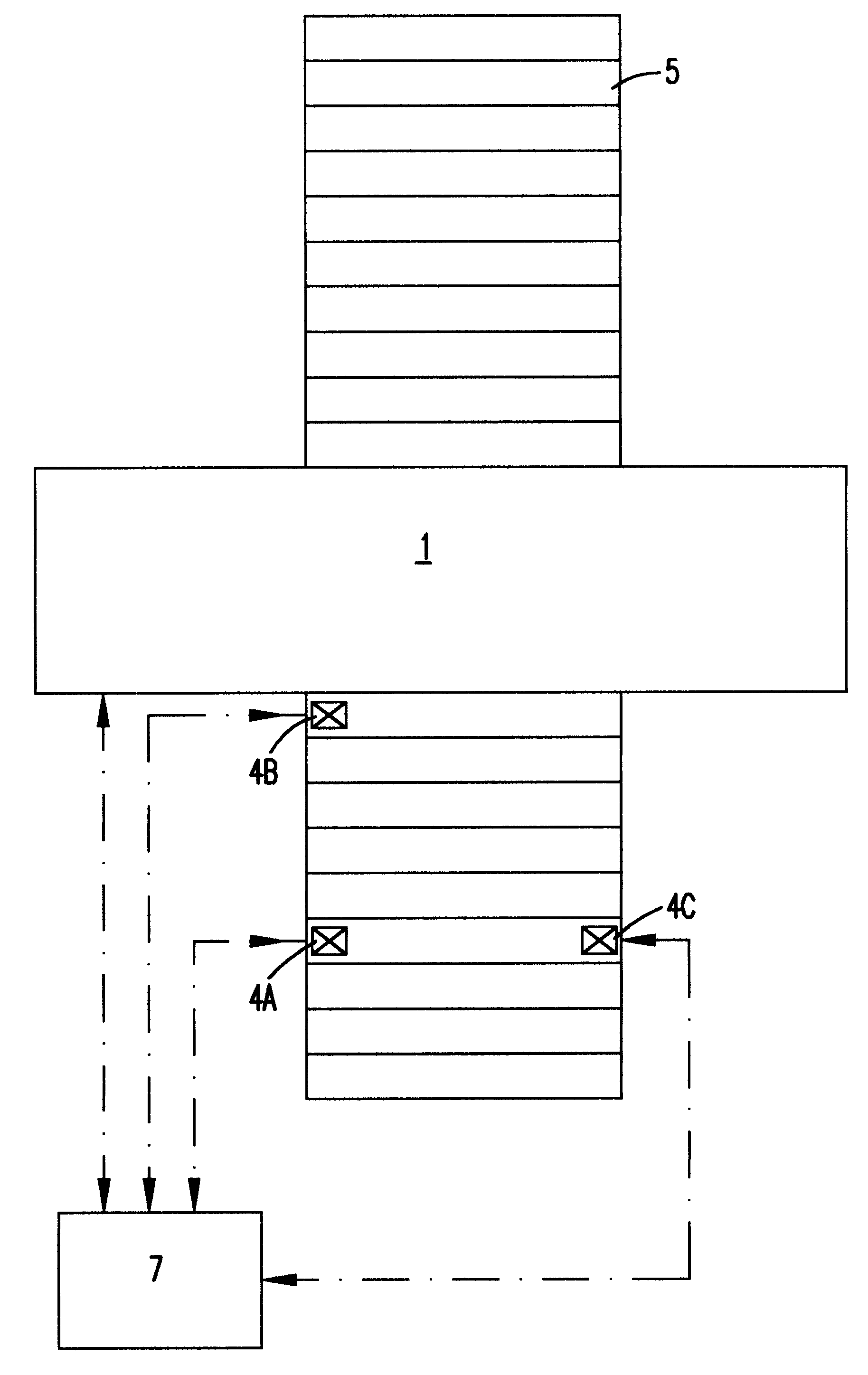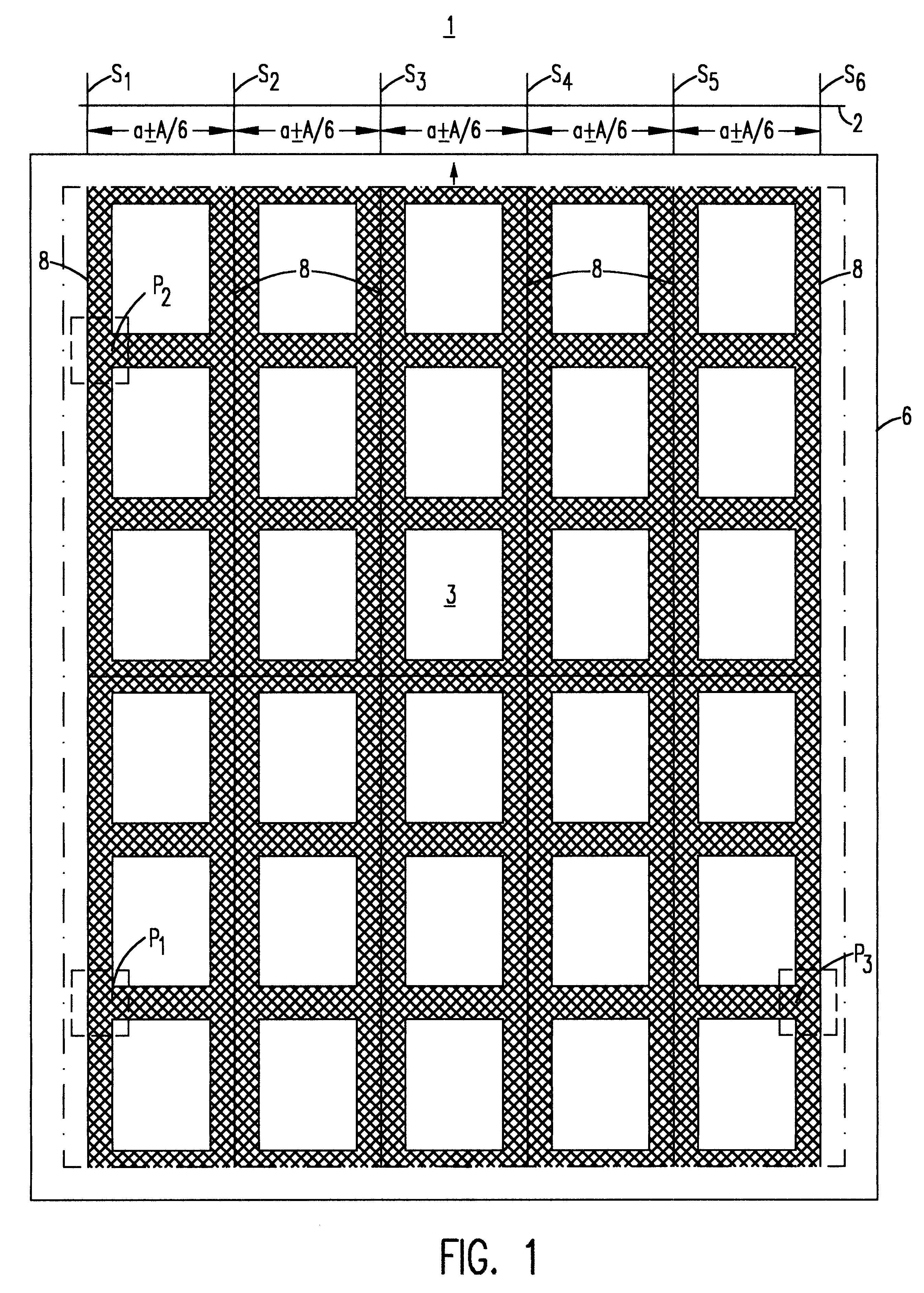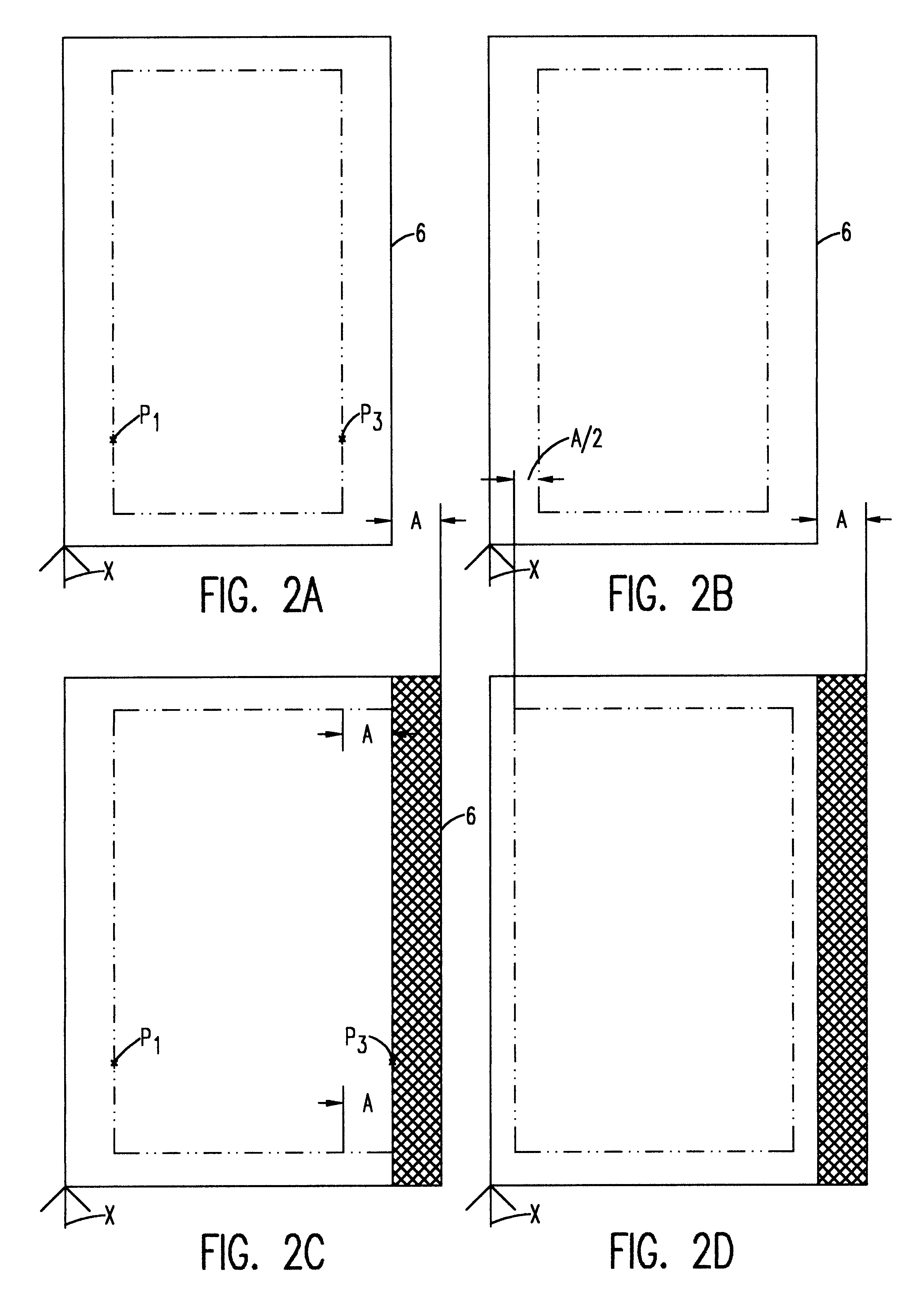Process for cutting out panels or the like
a cutting and panel technology, applied in the direction of lamination, automatic control devices, feeding apparatuses, etc., can solve the problems of uneven distribution of decorative layers, uneven decoration on individual panels, gaps, etc., and reduce the quality of the laid-out floor
- Summary
- Abstract
- Description
- Claims
- Application Information
AI Technical Summary
Benefits of technology
Problems solved by technology
Method used
Image
Examples
Embodiment Construction
FIG. 3 shows a board-dividing apparatus that is provided with a roller path 5, onto which the wood fiber panel 6 furnished with a decorative layer 3 can be laid. The board-dividing apparatus is provided with a saw 1 that consists of a plurality of saw blades S.sub.1, S.sub.2, S.sub.3, S.sub.4, S.sub.5, S.sub.6, that are positioned in parallel fashion. The saw blades S.sub.n are spaced at a distance of a. They can be positioned individually or on a common shaft 2. With the saw 1 depicted here the wood fiber panel 6 could be divided in the longitudinal direction. To divide the wood fiber panel 6 in the transverse direction, a transverse saw (not shown here) would be positioned with a 90.degree. shift. After a wood fiber panel 6 is divided in the longitudinal and transverse direction, the individual panels are fed to a milling device for profiling, which is not shown here in greater detail.
Three cameras 4a, 4b, 4c are positioned in front of the saw and above the roller path. Defined po...
PUM
| Property | Measurement | Unit |
|---|---|---|
| displacement | aaaaa | aaaaa |
| length | aaaaa | aaaaa |
| width | aaaaa | aaaaa |
Abstract
Description
Claims
Application Information
 Login to View More
Login to View More - R&D
- Intellectual Property
- Life Sciences
- Materials
- Tech Scout
- Unparalleled Data Quality
- Higher Quality Content
- 60% Fewer Hallucinations
Browse by: Latest US Patents, China's latest patents, Technical Efficacy Thesaurus, Application Domain, Technology Topic, Popular Technical Reports.
© 2025 PatSnap. All rights reserved.Legal|Privacy policy|Modern Slavery Act Transparency Statement|Sitemap|About US| Contact US: help@patsnap.com



